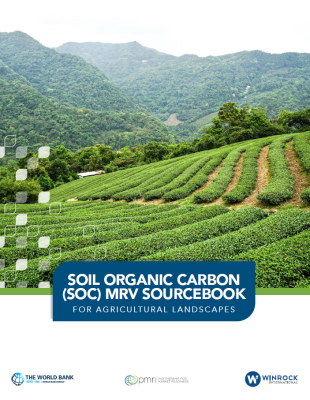Despite the significant potential of soil to sequester organic carbon, there are challenges to implementing carbon sequestration projects. For example, changes in soil carbon can be relatively small in magnitude per unit area and slow to be fully achieved, while its measurement and monitoring can be difficult and costly depending on the focus of the assessment. This sourcebook is designed to provide a conceptual foundation for soil organic carbon measurement and monitoring in croplands and grazing lands or rangelands. It provides methods and simple step-by-step guidance to produce reliable soil carbon measurements across a variety of settings and contexts, with comparisons on what frameworks, approaches, or methods to choose relative to the goal of the assessment, costs, feasibility, and uncertainty. Although greenhouse gas (GHG) emissions (methane, CH4, or nitrous oxide, N2O) associated to agricultural land management can be significant and must be assessed to calculate total net GHG reductions of a project, this sourcebook focuses on soil carbon and specifically changes in soil carbon in agricultural lands that are a direct consequence of land management. Chapter one introduces soil carbon and the agricultural practices that enhance carbon stocks, chapter two presents an overview of how users should select a soil carbon assessment methodology. Chapter three is split into modules providing detailed guidance on the decision points related to designing and implementing a soil carbon assessment system based on the needs of the user and the focus of the project.

